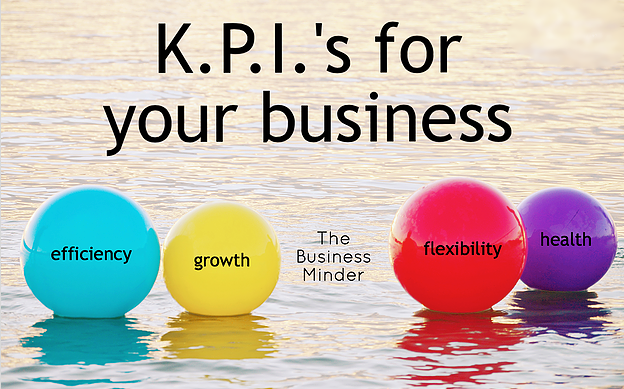Four KPI groups to improve your business
- Gary Chamberlain

- Jul 21, 2016
- 2 min read

If you're measuring key performance indicators then you need to concentrate on your key areas of business. There's no point in measuring things that won't make a difference to your business over time. How many KPIs should you measure? It depends on your business. Small businesses may only need half a dozen or so. Larger businesses might have that many for each department – or for each manager. More doesn't necessarily mean better, so don't get carried away. Too many metrics can complicate the picture. Make sure you have just enough to give you a clear overview of your business. The Business Minder will be able to help choose the ones most relevant for you.
What does a KPI look like?
A KPI is a metric so it's a way of measuring your business. To be effective, it should be:
Relevant The best metrics are those that have the most impact.
Balanced Measure short and long-term KPIs.
Understandable Everyone in the business should know what the KPI means.
Shared Everyone in the business should know why it’s important.
Financial KPIs come from the data in your accounting system. Non-financial KPIs come from data outside of your accounting system, such as your website and your Customer Reletaionship Management system.
Grouping your KPI's
Effective key performance indicators can be organised into groups. Here are examples of four groups that could have a big impact on your business.
1. Efficiency
Reducing waste and making the most of your resources.
Finding ways to improve staff productivity.
Lowering inventory days on hand to reduce storage costs.
2. Flexibility
Reducing credit risk by optimising debt levels.
Improving profitability to increase interest coverage.
Reducing financial risk by increasing equity-to-asset levels
3. Health
Balance debt and equity levels to the best proportions.
Balance inventory levels with trade payables to get the best performance.
Optimising trade terms to speed up receipts.
4. Growth
Increasing your sales, measured by gross and net revenue.
Improving wealth, measured by business equity.
Key performance indicators are useful in all areas of business. It's important to use them in the right way and not just define a KPI and then forget about it. Make sure that whatever you choose to measure is reviewed and tracked on a regular and frequent basis.









































Comments